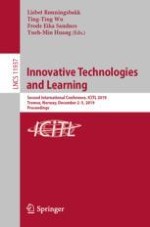This book constitutes the refereed proceedings of the Second International Conference on Innovative Technologies and Learning, ICITL 2019, held in Tromsø, Norway, in December 2019.
The 85 full papers presented together with 4 short papers were carefully reviewed and selected from 189 submissions. The papers are organized in the following topical sections: application and design of innovative learning software; artificial intelligence and data mining in education; augmented and virtual reality in education; computational thinking in education; design and framework of learning systems; educational data analytics techniques and adaptive learning applications; evaluation, assessment and test; innovative learning in education; mobile learning; new perspectives in education; online course and web-based environment; pedagogies to innovative technologies; social media learning; technologies enhanced language learning; and technology and engineering education.
